The Next Frontier in Data Transfer
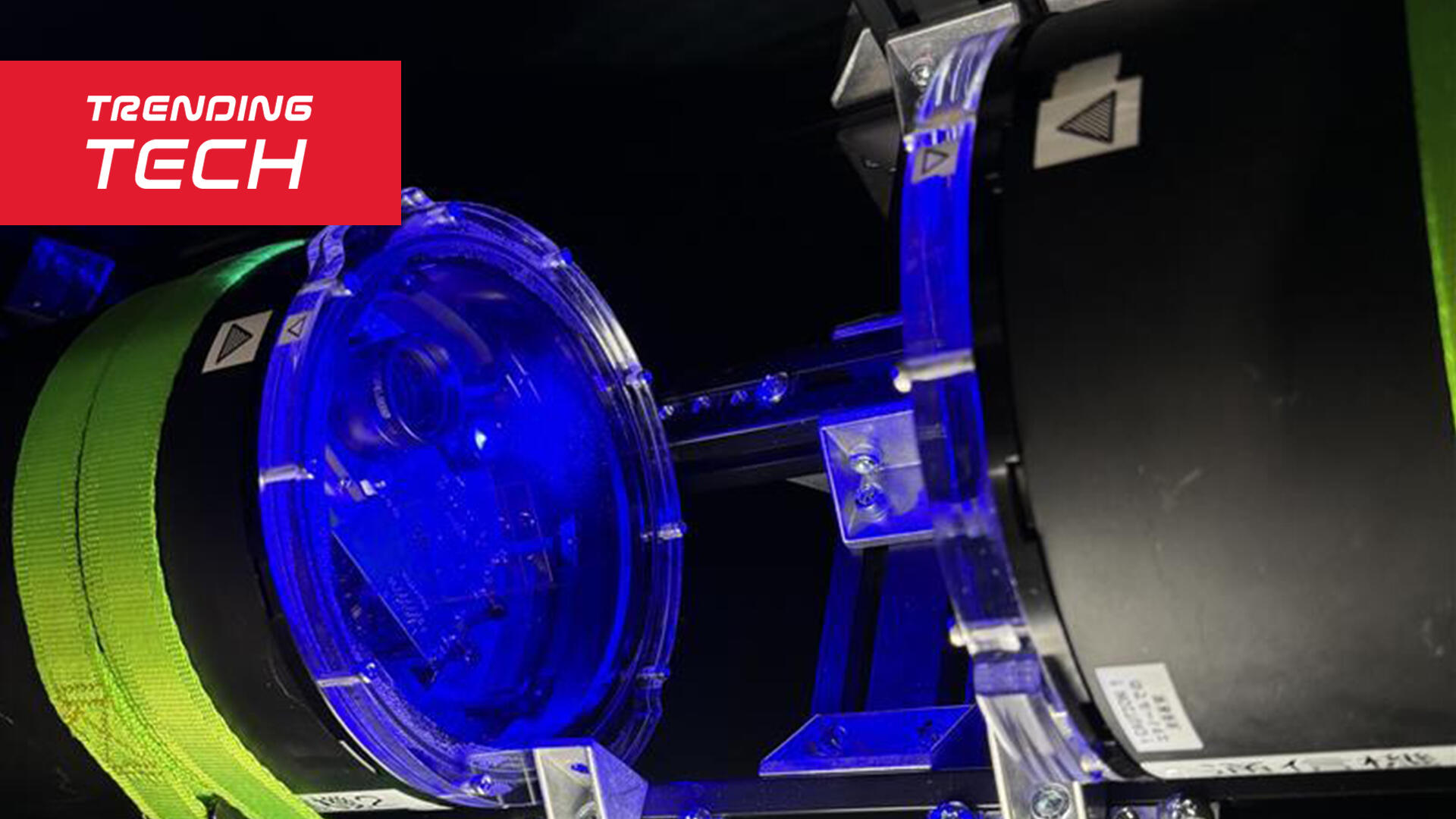
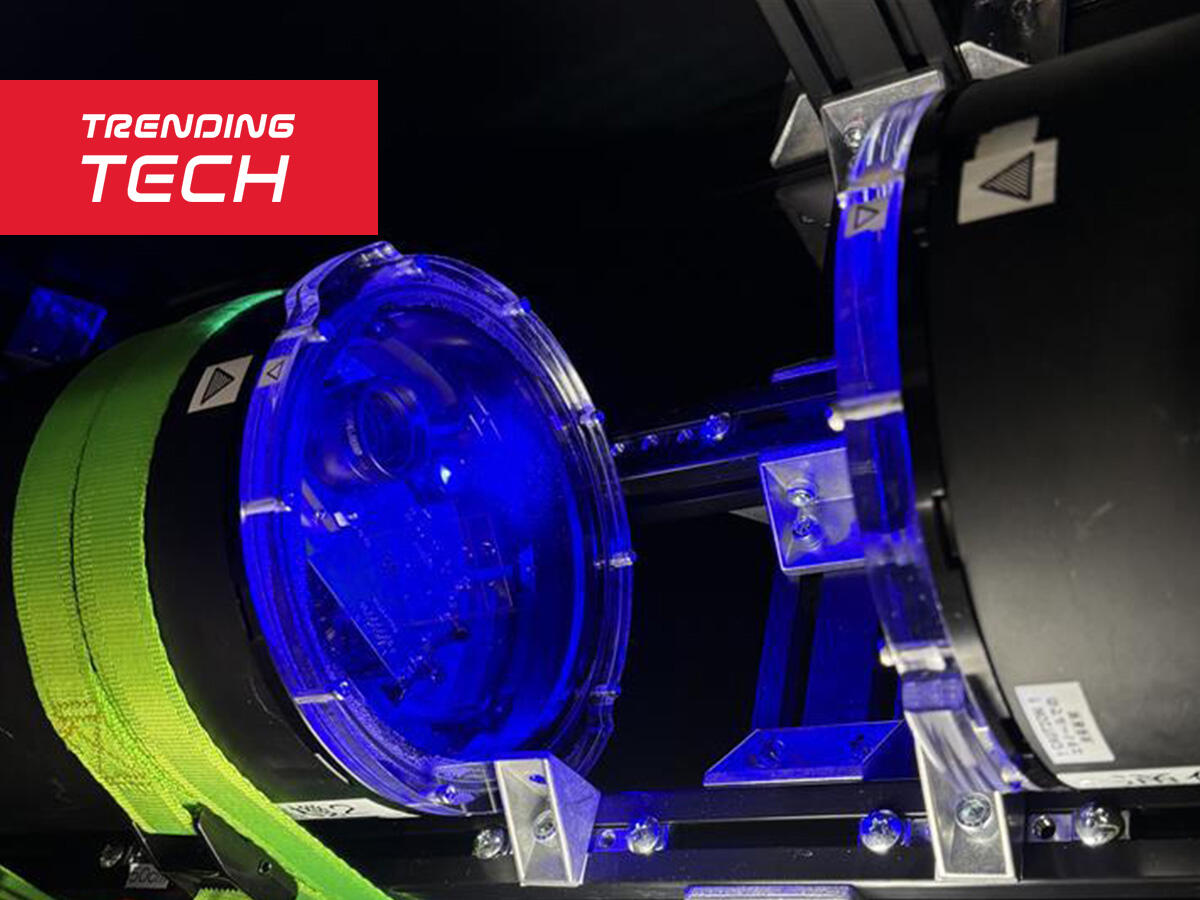
On land, wireless communication technology has advanced at an extraordinary pace over the past few decades. High-speed mobile networks, low-latency connections, and massive data transfers are now a routine part of daily life. But underwater, the situation is very different. The physical properties of water impose tight constraints on how signals propagate, and the techniques that work in air are often ineffective in the sea. This has created a persistent gap between what is possible on land and what can be replicated in underwater environments.
Communication in the ocean is fundamentally difficult because water interacts with sound, radio, and light in very different ways from air. The two main wireless methods are widely used today and acoustic and radio wave systems.
Acoustic communication sends data through sound waves. It can cover long distances — often several kilometers — making it useful for basic telemetry or control signals. However, its data rates are extremely low, typically from a few kilobits to hundreds of kilobits per second. For comparison, even early 1990s dial-up internet speeds exceeded this. Moreover, because sound travels much more slowly in water than electromagnetic signals in air, latency is high. That means there is a noticeable delay between sending and receiving, which makes acoustic systems unsuitable for real-time control of remotely operated vehicles (ROVs) or for transmitting high-resolution video.
Radio waves, which carry most terrestrial wireless traffic, fare poorly underwater. Seawater is conductive and absorbs electromagnetic energy rapidly. At most frequencies used for communication, the range is limited to centimeters or meters. While radio communication can achieve higher speeds than acoustics over these short distances, it cannot bridge the gap for most operational needs. Low-frequency radio can travel farther underwater, but at the cost of extremely low bandwidth.
These limitations have long constrained subsea operations. High-definition video streaming from an ROV, rapid transfer of large sonar datasets, or instant collaboration between underwater robots has generally required either surfacing to offload data or using a physical cable — often fiber optic — to connect the vehicle to a ship. Cables deliver the needed performance but restrict mobility, can be damaged, and are expensive to deploy, especially in deep or turbulent waters.
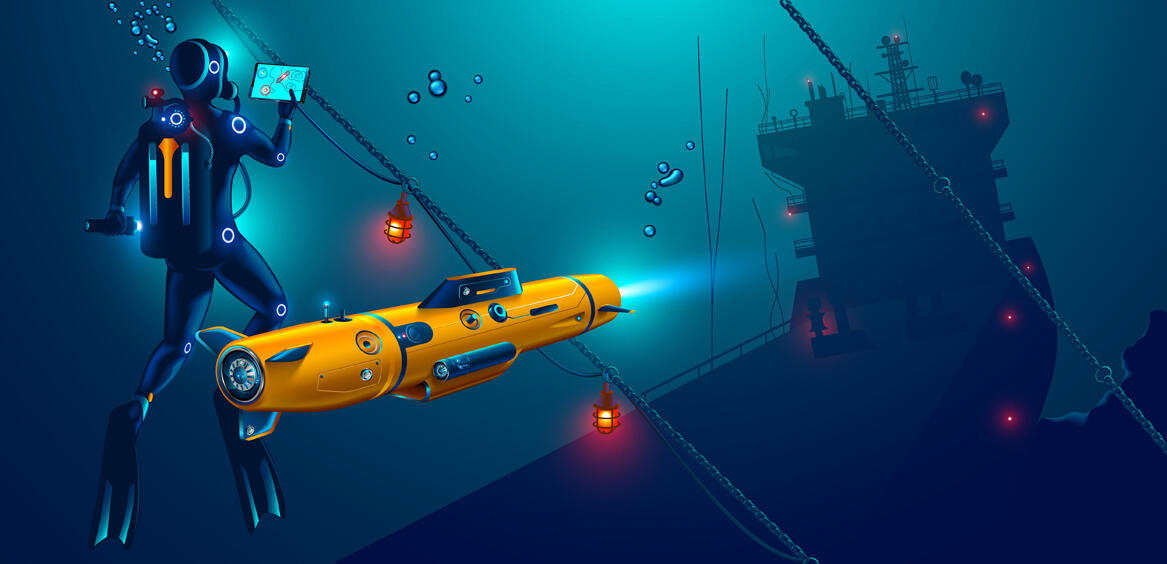
Recently, researchers have been exploring a third option: Underwater Wireless Optical Communication (UWOC). In UWOC, beams of light are modulated to carry digital information, much like how fiber-optic cables work — except without the cable.
Light behaves differently in water than sound or radio waves. While most wavelengths are absorbed rapidly, blue and green light can penetrate relatively far, particularly in clear water. This makes them attractive for underwater communication. UWOC has the potential to deliver much higher data rates and lower latency than acoustics, and much greater range than high-speed radio in water.
The basic concept has been around for years, but recent advances in light sources, optics, and signal processing have made underwater UWOC far more practical. One of the most important developments is the emergence of Gallium Nitride (GaN) laser diodes, which can function as compact, efficient, and powerful emitters.
Traditional UWOC systems have often relied on light-emitting diodes (LEDs) as the light communication source. While LEDs are inexpensive and widely available, they have limitations. Their brightness per unit area is relatively low, which limits range, and their modulation speeds — the measurement of how quickly they can turn on and off to encode data — are constrained, which limits bandwidth.
GaN lasers overcome many of these issues. They can emit extremely bright light from a very small area, allowing for more focused beams that carry farther. They can also be modulated at much higher frequencies, enabling multi-gigabit-per-second data rates. In addition, GaN lasers can be tuned to wavelengths in the blue-green spectrum, which are optimal for underwater transmission.
As a result, modern GaN laser-based UWOC systems can potentially achieve ranges of hundreds of meters with data rates in the hundreds of megabits to gigabits per second — a combination unmatched by other wireless underwater technologies.
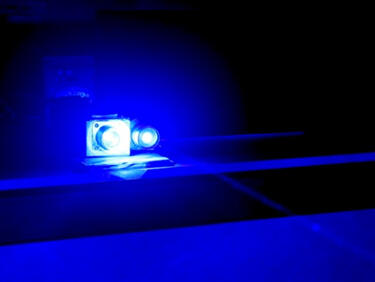
Designing a working underwater UWOC system involves more than choosing a good light source. The ocean is a dynamic and often hostile environment for optical signals.
This makes alignment a major challenge. Because light beams are directional, the transmitter and receiver need to be pointed at each other. In practice, underwater vehicles or divers may drift due to currents or waves, causing misalignment. To counter this, engineers are developing beam steering and tracking systems that can automatically adjust the beam direction in real time.
Water clarity also matters. Suspended particles scatter light, reducing range and signal quality. In turbid conditions, performance drops, though advanced modulation schemes and error correction can help maintain a usable link. Ambient light, particularly sunlight in shallow waters, can interfere with optical receivers. This requires careful filtering and signal processing to extract the data from background noise.
In recent years, controlled-environment tests have shown that UWOC can deliver stable, high-speed connections over operationally useful distances. For example, in a recent demonstration by Kyocera, the world’s fastest short-distance transfer rate of 750Mbps was confirmed in offshore trials near Numazu City, Shizuoka Prefecture, Japan, and this company now aims for the ultimate goal of 1Gbps.
The Shizuoka trial was conducted over 6.7 meters in an offshore saltwater environment over a 15cm~1.5m communication distance with moderate water turbidity to evaluate system stability and performance under various conditions. These and other trials have confirmed that while performance varies with conditions, UWOC can reliably outperform acoustic and short-range radio links for high-data-rate applications.
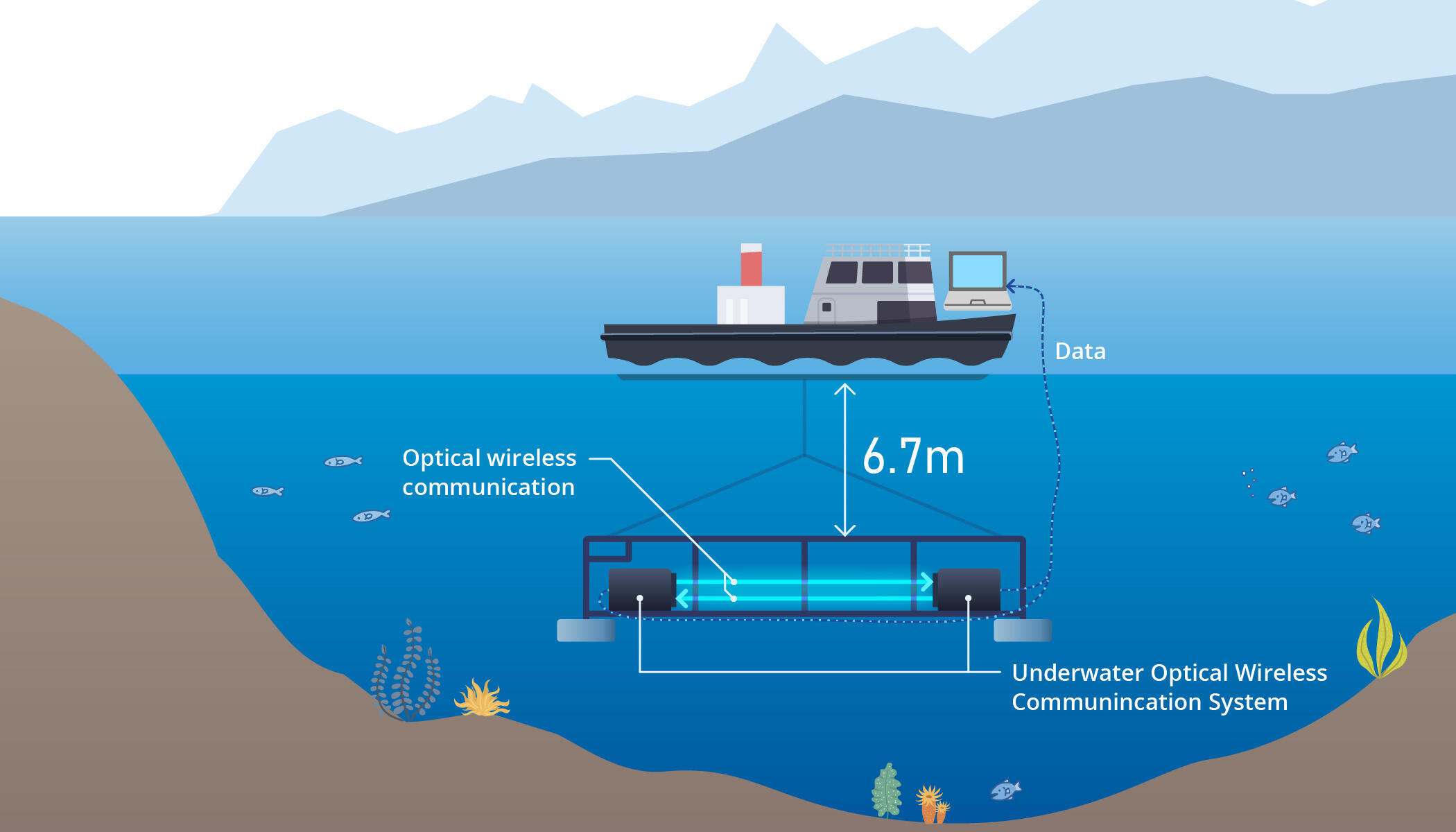
The potential uses of underwater UWOC are broad and align with trends in many marine industries.
In marine research, scientists often deploy sensor arrays, cameras, and autonomous vehicles to study ecosystems, geology, and oceanography. Traditionally, much of the data collected would be stored locally and retrieved later. With UWOC, researchers could access this data in real time, allowing them to adapt experiments on the fly or respond quickly to unexpected events.
In infrastructure inspection, such as offshore wind farms, oil and gas facilities, and subsea cables, technicians use ROVs to assess condition and perform maintenance. UWOC could allow these vehicles to stream high-definition video directly to engineers onshore, improving decision-making and reducing the need for costly repeat missions.
In the aquaculture industry, fish farms can use UWOC to connect underwater cameras and environmental sensors to control systems, enabling constant monitoring of fish health, feeding patterns, and water quality. This supports more efficient and sustainable operations.
Finally, in disaster response, such as flooded urban environments or submerged tunnels, visible light communication could provide emergency teams with a way to communicate and share situational images where conventional radios fail.
Despite its advantages, UWOC is not a universal solution. Optical systems generally require line of sight between transmitter and receiver, and performance is highly dependent on water clarity. In murky or sediment-rich waters, range can drop significantly.
For these reasons, experts envision UWOC as part of a hybrid network. Acoustic links would still be used for long-range, low-speed communication, while UWOC would provide high-speed bursts of data when vehicles or divers are within range. In addition, radio might be used for ultra-short-range tasks or as a backup.
Hybrid systems could dynamically switch between modes based on range, data requirements, and environmental conditions, ensuring connectivity while optimizing performance.
Interest in UWOC is growing worldwide. Universities, government research agencies, and private companies, such as Kyocera, are all contributing to the field. Some are focusing on compact, diver-to-diver communication devices. Others are building high-power systems for ship-to-submersible links. International collaborations are exploring interoperability standards, so different systems can communicate seamlessly.
In addition, advances in autonomous navigation, environmental sensing, and AI-driven beam tracking are likely to further improve the robustness of UWOC.
Underwater communication has long been defined by compromise: choose between range and bandwidth, or between mobility and performance. Visible light communication, particularly when powered by GaN laser technology, offers a way to break out of that trade-off, delivering high-speed, low-latency links over meaningful distances in the challenging marine environment.
While challenges remain — from environmental variability to integration with existing systems — the trajectory of research and testing suggests that UWOC will play a central role in the next generation of subsea communication networks. As industries and governments push toward greater ocean digitalization, the ability to move data freely and quickly underwater will be as transformative as the shift from dial-up to broadband was on land.
If UWOC fulfills its promise, the oceans of the future could be alive with streams of light-based data connecting sensors, vehicles, and people — enabling safer operations, deeper exploration, and a richer understanding of the planet’s largest habitat.
Read more about Kyocera’s recent trial test results for UWOC here:
Kyocera Succeeds in World's Fastest 750Mbps* Short-Range Underwater Wireless Optical Communication (UWOC) in Offshore Trials | News | Newsroom | KYOCERA
Articles in the same series
Latest Articles
-
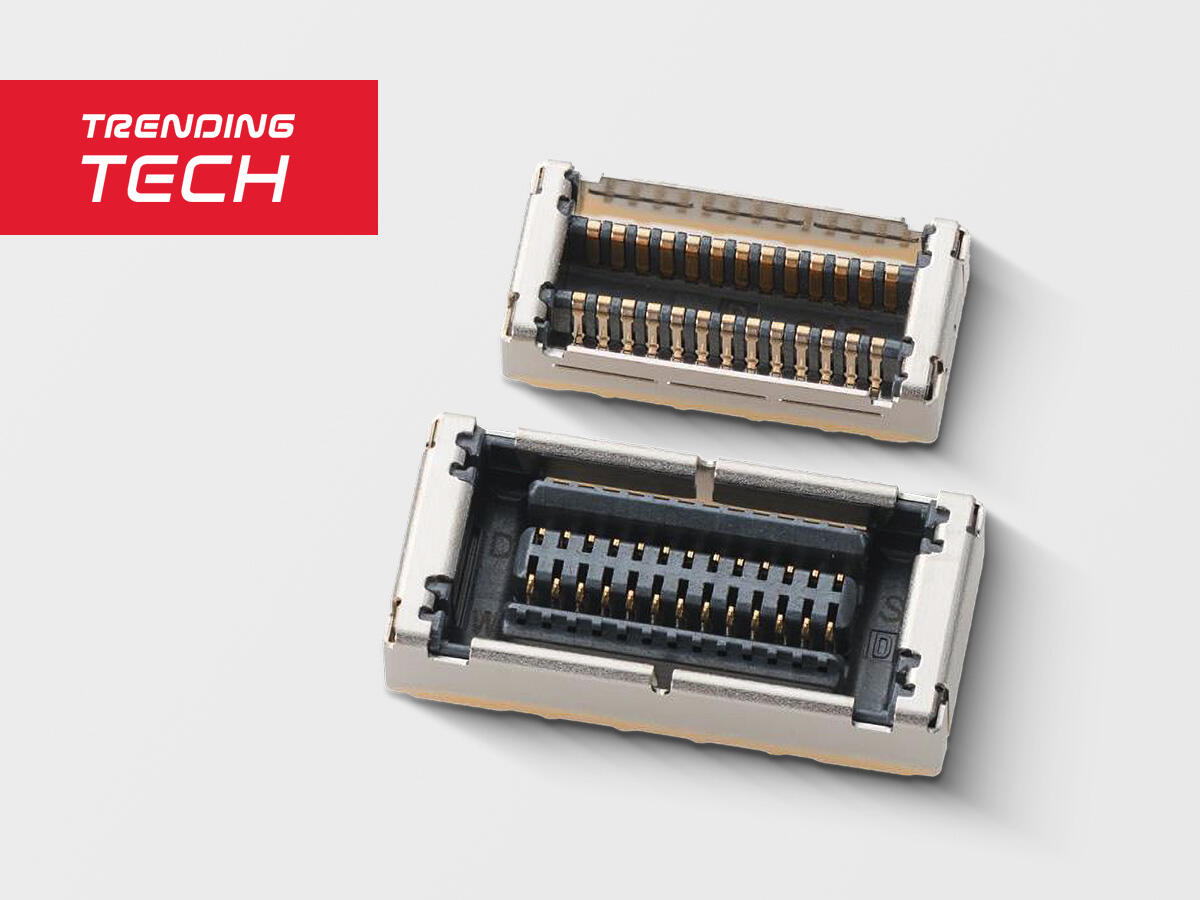
TRENDING TECH
New pitch board to board connector “5908 Series”
-

TRENDING TECH
The Next Frontier in Data Transfer
-

RISING TO THE CHALLENGE
Cotopat’s Market Success Driven by Rigorous Testing and Team Collaboration
-

TRENDING TECH
AI Meets Legacy Systems – A Partnership to Watch
-
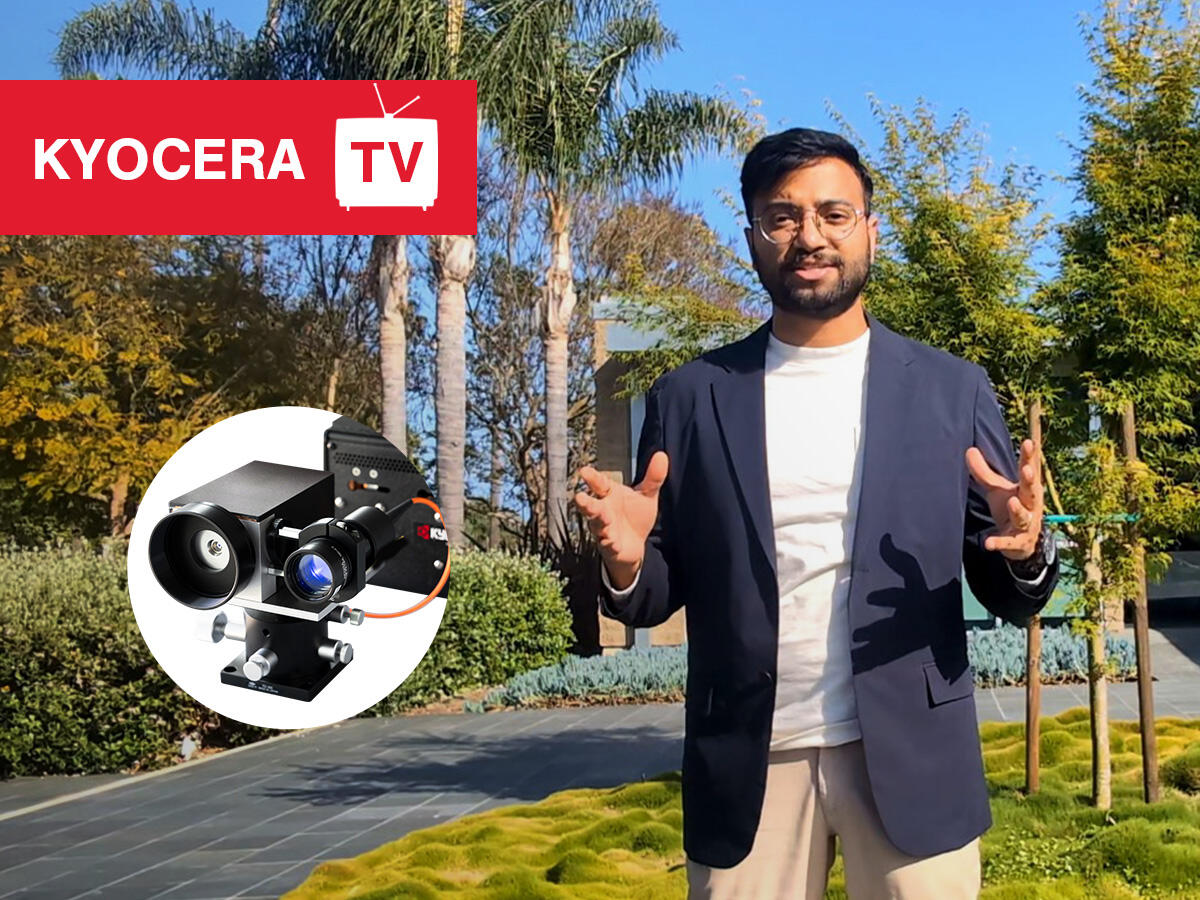
KYOCERA TV
Kyocera Teaches: What is LiFi?
-
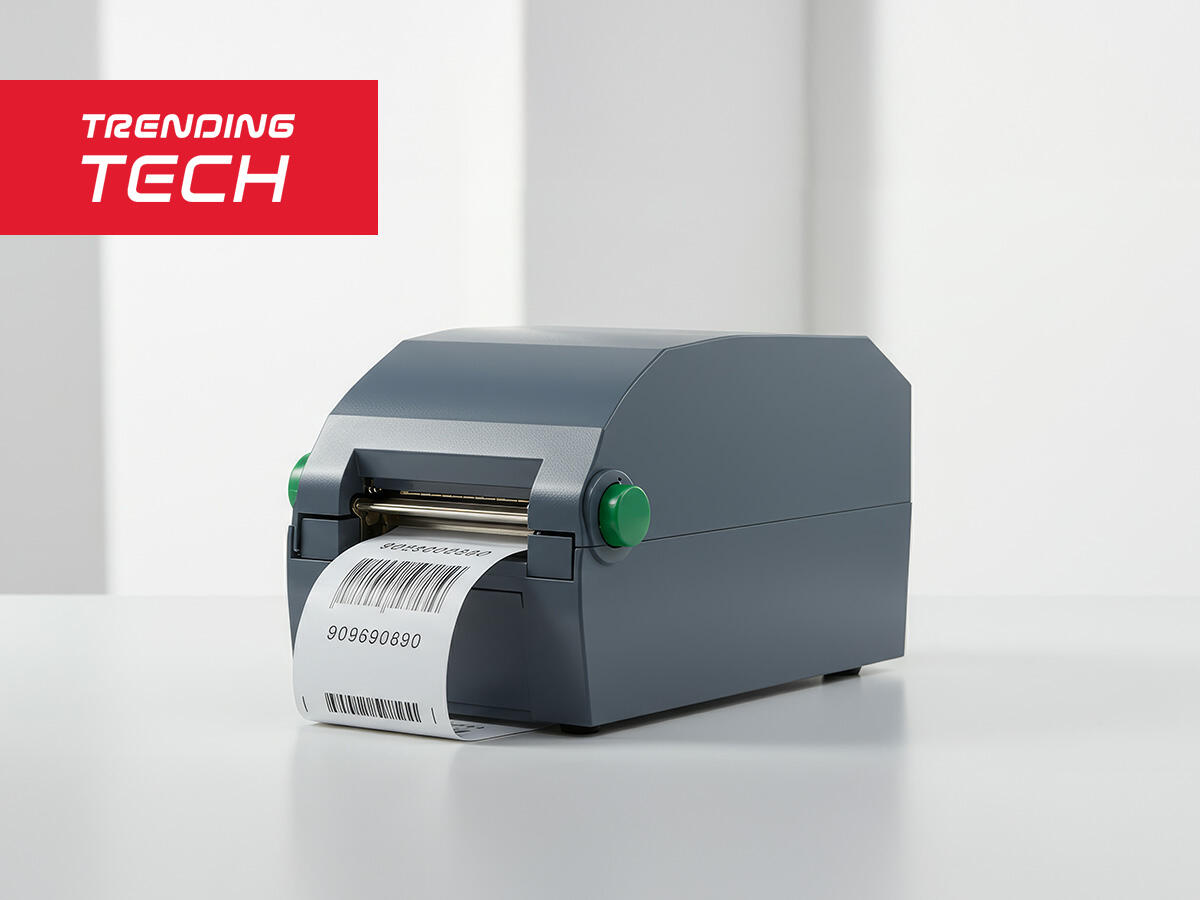
TRENDING TECH
Print Like Never Before: Kyocera Unveils 'TPA Series' Thermal Printhead for Stunning Quality


